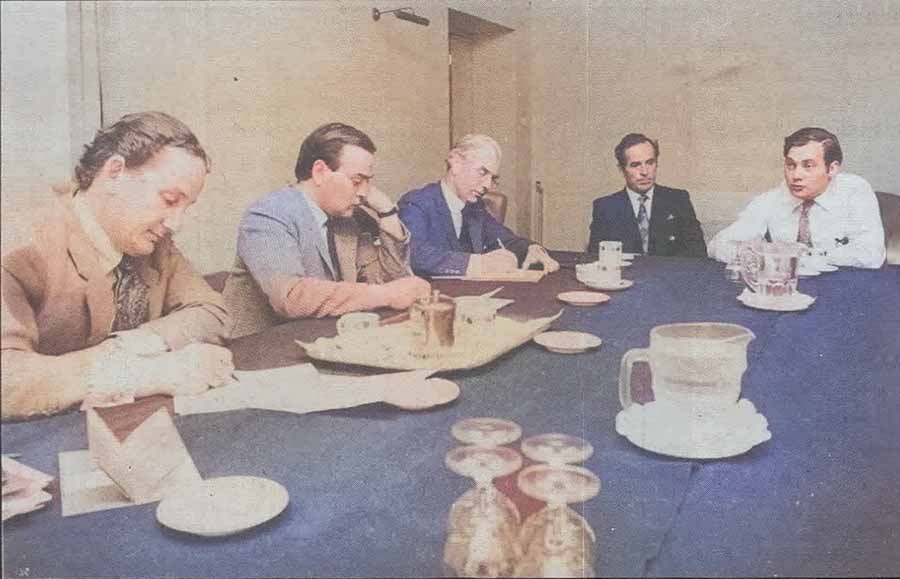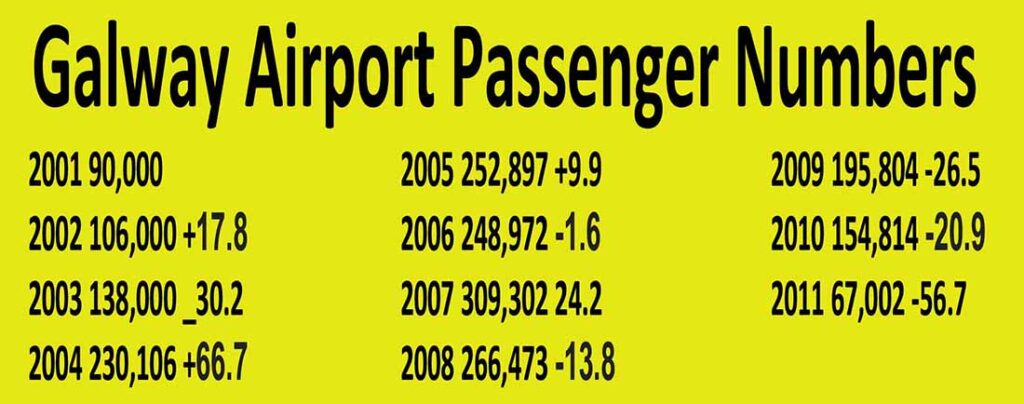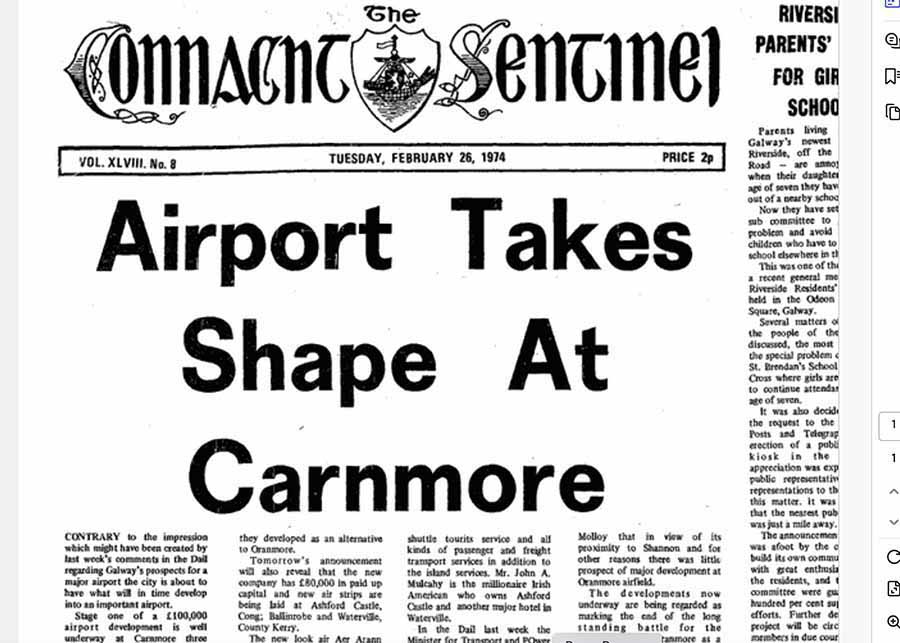
Galway City and County Councils are inviting proposals for the redevelopment of the former Galway Airport site, purchased for €1.1m in November 2013.
The 118-acre Carnmore site includes a terminal building, two hangars, and ample parking, seen as having major potential for economic development.
The airport has been labelled as ‘vital’ for economic growth in the Galway Metropolitan Area in the Regional Spatial and Economic Strategy 2020-2032.
The site has served multiple purposes over the years, including a Covid-19 testing centre and hosting high-profile events like the Galway Summer Sessions in 2024.
The deadline for potential bidders to submit expressions of interest is May 23 at 5pm.
Galway has not had a commercial service since October 31, 2011, when Aer Arann ceased its operations at the airport.
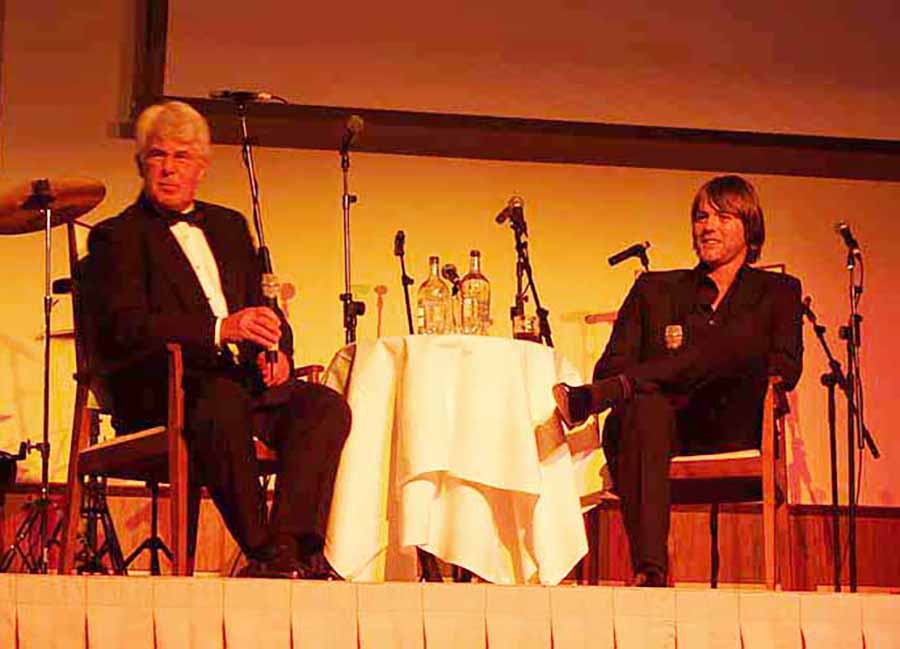
Galway airport: the challenges
At its peak, Galway Airport was an important gateway to the West of Ireland, serving over 300,000 passengers annually and connecting Galway to English and European cities. However, economic challenges, infrastructure limitations, and government funding priorities led to its closure.
The airport’s history reflects the broader difficulties faced by small regional airports in competing with larger hubs, particularly in a post-recession environment. While proposals like the film studio offer hope for repurposing, the site’s future remains uncertain, with its legacy tied to the Galway Flying Club and occasional community uses like COVID-19 testing.
From the former First World War RAF training base at Oranmore, Aer Arann began their service to the Aran Islands in 1970, later moving to the new airport at Carnmore in 1974, built by local businessman Ernest Steiner adjacent to his factory.
The runway’s length (1,289 meters) restricted operations to turboprop aircraft and small executive jets, limiting the airport’s ability to compete with larger airports like Shannon (85 km away) and Ireland West Airport Knock (87 km away), which can handle jet airliners.
The 2008 financial crisis significantly reduced tourism and demand for regional flights. Aer Arann’s financial difficulties further exacerbated the airport’s decline. Social media discussions highlight the perception that Galway, despite its popularity, lacks the population base to sustain an airport compared to Knock, which benefits from Ryanair’s operations and a broader catchment area.
Nearby airports like Shannon, Knock, and Dublin offer more extensive flight networks and better infrastructure, making them more viable for travelers to Galway. Efficient bus services (e.g., Citylink, Bus Éireann) and car rentals from these airports have reduced the need for a local airport.
The 115-acre airport site was acquired through a joint investment by Galway County Council and Galway City Council for €1.1m in November 2013. At that time, Mayor Pádraig Conneely remarked that the airport “was not viable.” Since its purchase, the estimated annual cost for site security has ranged from €50,000 to €80,000.
At its busiest Galway offered scheduled services to Irish and English cities, but the airport always relied heavily on subsidies and high handling charges. The runway was not long enough for larger aircraft, and with two international airports one hour away, passenger numbers fell steadily and airlines began to withdraw. In 2013 the airport handed its licence back to the Department of Transport.
The aerodrome licence was revoked in November 2013, leading to the effective closure of the airport, except for the activities of the Galway Flying Club, which retains use of the facility.
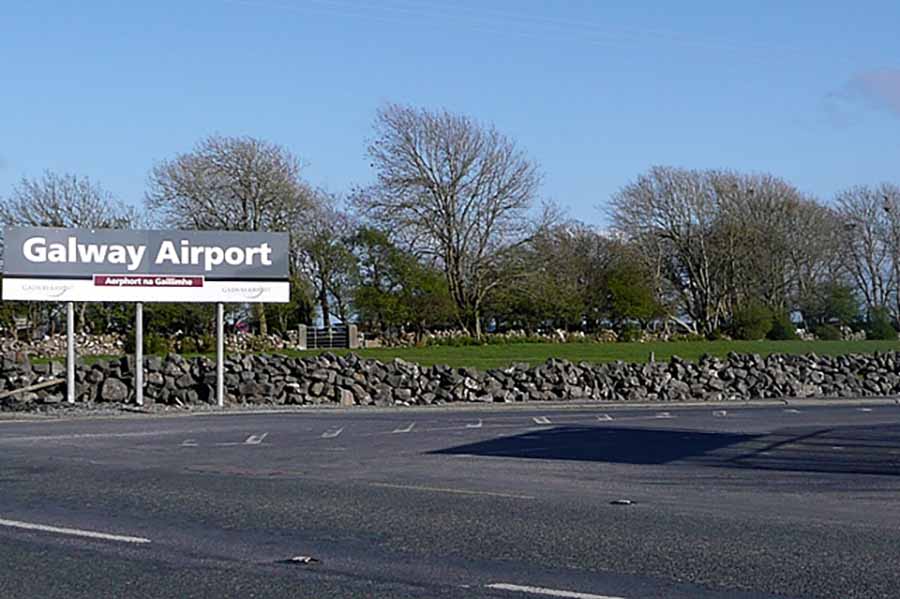
Hard Landing; the story of Galway Airport
Galway Airport (IATA: GWY, ICAO: EICM), located at Carnmore, approximately 6.5 km east of Galway City, Ireland, has a history marked by growth, decline, and attempts at repurposing. Below is a detailed account of its development and key milestones based on available information:
- 1918: An airfield with two hangars at Oranmore was developed for a pre-independence RAF base.
- 1919: After Alcock and Brown crash landed in Derryginla bog in Clifden on the first trans-Atlantic air crossing, The Connacht Tribune proudly declared that Galway was the ideal location for a transatlantic air platform linking Europe with the New World.
- 1929 Charles Russell, former commander of the Free State Air Corps, flew from Oranmore to Croydon in London with mail from the German/American liner, the Karlsruhe, which had just arrived at Galway Bay as an experimental. Flying time was two hours and 51 minutes, allowing for stops at Baldonnel and Chester.
- 1932 The first Galway to Berlin air-link, again form Oranmore.
- 1933 The Saorstát’s very first air service takes off from Galway, the short lived Western Air Transport company. The new Fianna Fail Minister, Sean Lemass named Galway airport as a potential trans-Alantic airport site. Rineanna was eventually chosen in October 1936 and was to become Shannon airport.
- 1935: The colourful Frederick Leo Crilly, first generation Irishman and proprietor of Crilly Airways, London proposed a commercial air service from Oranmore to London, also carrying mail from trans-Atlantic liners. Galway Chamber of Commerce passed a motion a suring him of its willingness to back him ‘financially and otherwise’ in the establishment of a Galway-London service.
- 1964: Frst air display at Carnmore airport. The Carnmore site initially served as a small private airfield established by Ernest Steiner, a German businessman and former Luftwaffe officer. This modest airstrip laid the groundwork for future expansion. Air corps captain Liam Ó Coinne revitalized Galway Flying Club and represented Carnmore at the first meeting of the airfield owners association in 1972.
- 1970 Aer Arann began their service to the Aran Islands originally from Oranmore. Hayden Lawford, operations manager of Aer Arann and fellow pilot Bill Wallace lived in one of two caravans at Oranmore airfield, which doubled as a tool shed and a booking hall during the day.
- 1974 Aer Arann moved to Carnmore to an airfield built by local businessman Ernest Steiner adjacent to his factory. Oranmore remained open until 1976 and is now being used as a commerial/industrial area.
- 1987: Carnmore airfield was upgraded to an international airport with the construction of a terminal and the extension of the runway to 1,200 meters (later recorded as 1,289 meters). This allowed the airport to handle regional commercial flights, primarily using turboprop aircraft due to the runway’s limited length, which was too short for most jet airliners.
- 1992: Aer Lingus based a Saab 340B aircraft at Carnmore airport, designed for use by Minister for Transport and Tourism Máire Geoghegan-Quinn.
- 2005 Allan Keen’s Euromanx arrives at the airport following a lavish launch organized by English celebrity agent Max Clifford in Galway Meyrick hotel and featuring Ray McSharry and Brian McFadden.
- 2007: Passenger numbers peaked at 309,302 (not far behind Kerry’s 389,434) as Galway airport became Ireland’s fastest-growing airport with a passenger growth rate of 63pc per annum. It welcomed its two-millionth passenger that year. The airport offered direct flights to 16 destinations, including Bristol, Cardiff, Cork, Dublin, Edinburgh, Leeds Bradford, London Luton, Lorient, Manchester, Newcastle, Belfast City, Birmingham, Southampton, Bordeaux, Faro, and Málaga. In February 2007, the Irish government allocated €6.3m in capital grants to support the airport’s development.
- 2008: Even as airport manager Liam scoalljan told n Oireachtas committee that Galway Airport was forecast to grow to 800,000 passengers by 2030, the global financial crisis began impacting operations. The government reduced its funding by 50–60% due to national budget cuts. Aer Arann, the primary airline operating at Galway, introduced a short-lived service to Amsterdam via Waterford Airport, which was discontinued soon after. Passenger numbers and routes began to decline, with only Aer Arann’s services to Luton, Lorient (seasonal), Manchester, and Edinburgh remaining by the end of the year.
- 2010: The airport faced further challenges. Manx2 briefly operated services to Belfast International and Cork in 2010, but these were withdrawn in 2011. In March 2011, Aer Arann launched twice-daily flights to Southend Airport, and a €10 “Development Fee” was introduced for departing passengers aged 12 and over.
- 2011: In Juen 2011, the Irish government announced it would cease funding Galway Airport by December 2011, prioritising four other regional airports (Dublin, Shannon, Cork, and Knock). On October 12, 2011, Aer Arann announced the suspension of its services from Galway for the winter season, effective October 31, 2011, resulting in no scheduled flights. The airport remained open but without commercial traffic.
- 2012: Financial difficulties persisted. In February, airport workers staged a sit-in to protest the potential loss of redundancy payments after the airport’s bankers seized its working capital.
- 2013: Galway City Council and Galway County Council assumed control of the airport. In November 2013, the airport’s aviation license was revoked, effectively closing the facility to commercial operations.
- 2015: Galway Airport briefly reopened for commercial flights under a license from Galway County Council, operated by Carnmore Aviation Ltd., a subsidiary of the Conneely Group, which also owns Weston Airport near Dublin. Nearly 60 jets used the airport during this period, with staff shared between the two facilities. However, this revival was short-lived, and the airport closed to commercial traffic again in 2016. Since then, it has been used solely by the Galway Flying Club for fixed-wing training and leisure flying.
- 2016: A feasibility study for the council identified the site as suitable for a creative and film hub. TG4 utilised the hangars for a documentary on the 1916 Easter Rising. Proposals included constructing a regional stadium for GAA, rugby, and soccer events, as well as concerts, resembling the setup at Páirc Uí Chaoimh in Cork. The site’s proximity to the M6 motorway also opens up possibilities for a park-and-ride shuttle service to the city centre.
- 2020 The airport was included in the Galway Capital of Culture 2020 programme as a venue for large-scale events before the pandemic put paid to the activities. During the COVID-19 pandemic, the airport’s buildings were repurposed as a drive-through testing center, leveraging its large space for social distancing.
- 2021–2023: Plans were announced to transform the airport into a film and TV production studio named Atlantic Studios, with a projected launch in 2022. The project was expected to generate €10–15 million for Galway’s economy and create up to 200 jobs. However, as of 2023, these plans have not materialized, partly due to the limited duration of the planning permission granted. Discussions about future ownership options have continued between Galway City and County Councils.
- 2025: The airport remains closed to commercial traffic, with no scheduled flights. The Galway Flying Club continues to use the site, and the runway (1,289 meters) and facilities are maintained for private aviation. The airport’s future remains uncertain, with no confirmed plans for reopening or redevelopment.
